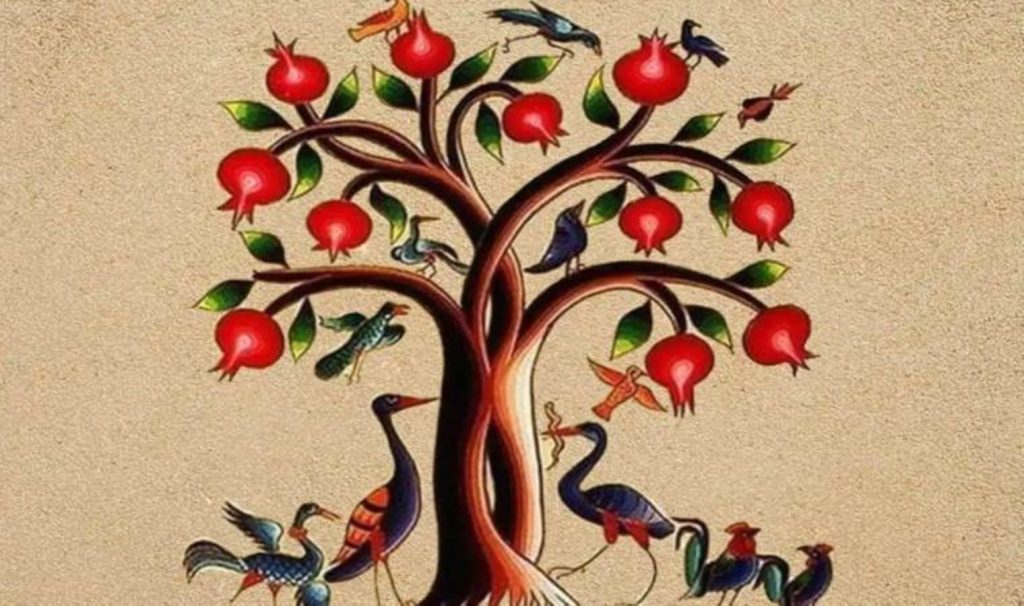The Origin of New Year’s Eve: Nardugan – Deniz Eylül Meriç
The Origin of New Year’s Eve: Nardugan – Deniz Eylül Meriç
The Origin of New Year’s Eve: Nardugan
The term Nardugan is derived from the Mongolian word nar (meaning “sun”) and the Turkish word tugan (meaning “born”). It refers to a holiday that was celebrated by the Turks before they converted to monotheism, under a tree they believed stood at the center of the world—what they called the “Tree of Life.”
Every year on December 22nd, people celebrated the Nardugan Festival to express their gratitude to Ülgen, the God of Fertility. On this day, the cosmic battle between day and night was believed to end, with daylight triumphing—symbolizing a new beginning and the rebirth of the sun. Much like the modern New Year’s Eve, homes were cleaned, people dressed in their finest clothes, and the most sacred spruce tree (Akçam ağacı) in the area was decorated with offerings for Ülgen. Songs were sung, and dances were performed around the tree in celebration.
Some studies suggest that the modern-day figure of Santa Claus may have roots in ancient Turkic traditions. According to these studies, there was a mythological figure named Ayaz Ata—an old, bearded man who, like today’s Santa Claus, would visit children to give them gifts and offer protection.
According to renowned Sumerologist Muazzez İlmiye Çığ:
“Today, the old man we know as Santa Claus was believed to be the evil brother of the Sky God, known as the Earth God. It was believed that on December 22nd, even he chose to be good and went door to door giving gifts. Santa Claus’ attire reflects ancient Turkish traditions. This custom was brought to Europe by the Huns and spread among Christians as Christianity expanded. In 325 AD, it was adopted as a way to commemorate the birth of Jesus Christ.”
As a result of these findings, it can be said that the origins of both New Year’s Eve and Santa Claus may lie in ancient Turkish traditions, which later spread to other parts of the world.
DENİZ EYLÜL MERİÇ

Kültür ve Turizm Bakanlığı Sinema Genel Müdürlüğünün desteğiyle 15 Temmuz Derneği'nin hayata geçirdiği "15 Temmuz Direniş Sahnesi Etkinlik Programı" açıklandı.Buna göre, 8 Temmuz saat 16.00'da İstanbul'daki Atlas Sineması'nda "Sıfır Noktasından (From Ground Zero)" filmi gösterilecek.Filmin ardından saat 19.00'da ise aynı sinemada, Filistin sinemasının dünyaca tanınan isimlerinden yapımcı ve sanat yönetmeni Hanna Atallah söyleşi gerçekleştirecek. stanbul …
Kocaeli'de iş stresinden uzaklaşmak isteyen Asuman Aldemir, Bodrum'da gördüğü ışıklı su kabaklarından ilham alarak başladığı hobisini eski bir ahırı dönüştürdüğü atölyede sürdürüyor. Aldemir, el emeğiyle yaptığı ürünleri ise sadece sevdiklerine hediye ediyor.Uzuntarla Mahallesi'nde yaşayan 48 yaşındaki Asuman Aldemir, 4 yıl önce tatil için gittiği Bodrum'un Gümüşlük beldesinde gördüğü ışıklı su kabağı süslemelerinden etkilenerek hayatında yeni …
Ordu'da taş oyma sanatı ile uğraşan 56 yaşındaki Celal Kaya, 3-5 günde yaptığı heykellerin bazen tarihi eser sanıldığını belirterek, “Bu heykelleri evimin bahçesinde sergiliyorum ve görmek için insanlar buraya geliyor” dedi.Perşembe ilçesi Saray Mahallesi’nde yaşayan evli ve 1 çocuk babası Celal Kaya, dedesinden ve babasından öğrendiği taş oymacılığı sanatını 20 yıldır devam ettiriyor.Hiçbir elektronik alet …
İstanbul Atatürk Kültür Merkezi (AKM) ile CSO Ada Ankara’da gerçekleşen etkinlikler ve ziyaretçi sayıları Türkiye’nin sanatta ulaştığı zirveyi gözler önüne serdi. Sanatı sadece desteklemediklerini, hak ettiği değere kavuşturduklarını vurgulayan Bakan Ersoy, AKM İstanbul ile CSO Ada Ankara’nın 2024-2025 sezonu ziyaretçi ve etkinlik sayılarını sosyal medya hesaplarından paylaştı.Bakan Ersoy’un açıkladığı verilere göre, AKM’de Eylül 2024 – …